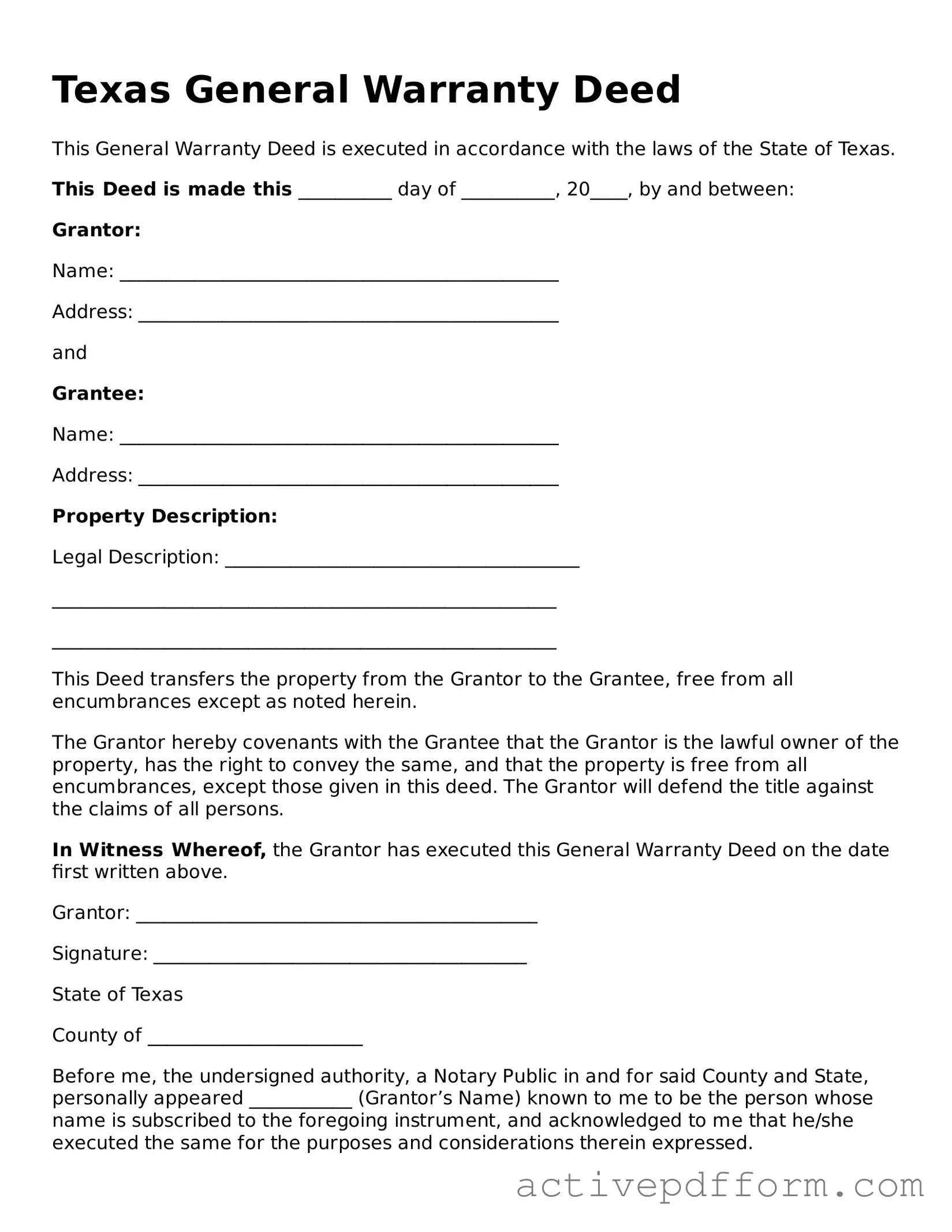Texas General Warranty Deed
This General Warranty Deed is executed in accordance with the laws of the State of Texas.
This Deed is made this __________ day of __________, 20____, by and between:
Grantor:
Name: _______________________________________________
Address: _____________________________________________
and
Grantee:
Name: _______________________________________________
Address: _____________________________________________
Property Description:
Legal Description: ______________________________________
______________________________________________________
______________________________________________________
This Deed transfers the property from the Grantor to the Grantee, free from all encumbrances except as noted herein.
The Grantor hereby covenants with the Grantee that the Grantor is the lawful owner of the property, has the right to convey the same, and that the property is free from all encumbrances, except those given in this deed. The Grantor will defend the title against the claims of all persons.
In Witness Whereof, the Grantor has executed this General Warranty Deed on the date first written above.
Grantor: ___________________________________________
Signature: ________________________________________
State of Texas
County of _______________________
Before me, the undersigned authority, a Notary Public in and for said County and State, personally appeared ___________ (Grantor’s Name) known to me to be the person whose name is subscribed to the foregoing instrument, and acknowledged to me that he/she executed the same for the purposes and considerations therein expressed.
Given under my hand and seal of office this _____ day of __________, 20____.
Notary Public in and for the State of Texas
My Commission Expires: ______________________________
